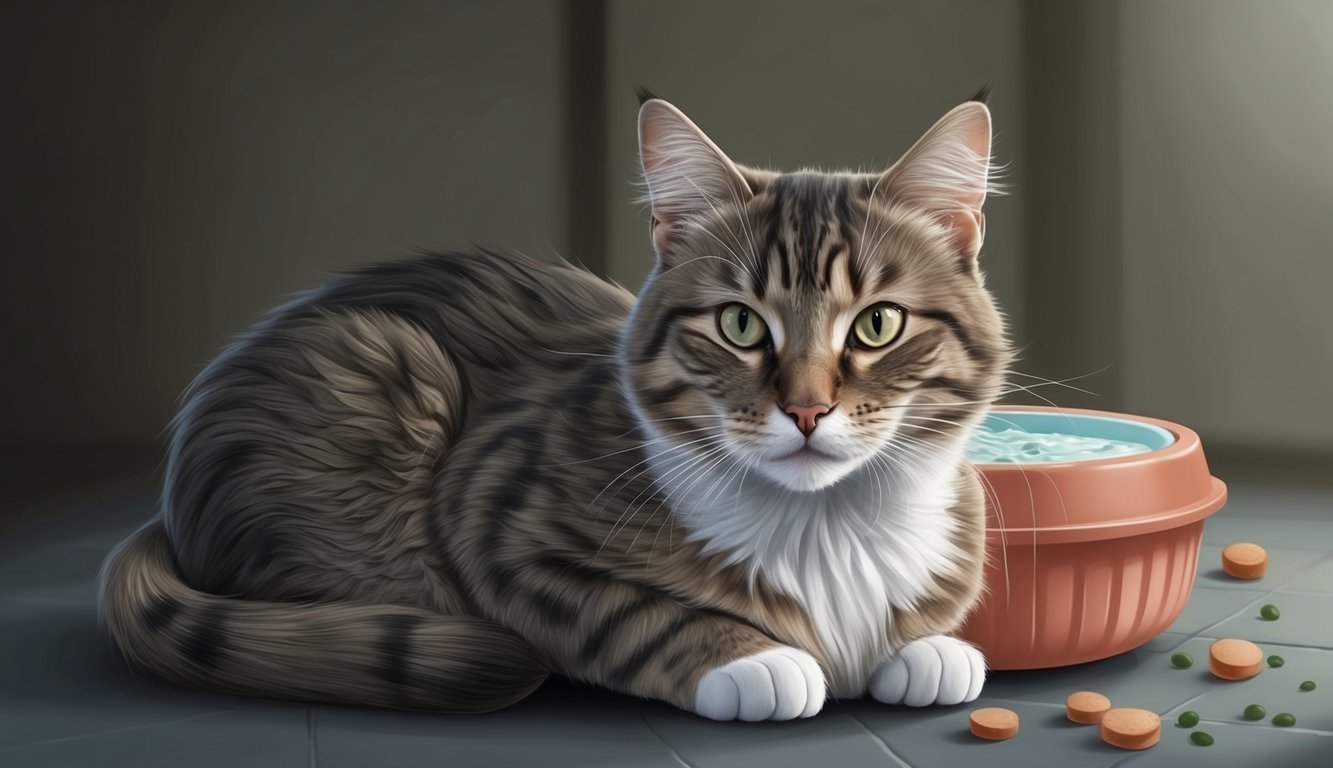Giardia is a common concern for cat owners, as this intestinal parasite can lead to significant health issues. Recognizing the symptoms early is crucial for effective treatment and recovery. Symptoms include severe, watery diarrhea, vomiting, and weight loss.
If your cat is experiencing frequent trips to the litter box or is grooming excessively, these could be red flags that something isn’t right.
Understanding how your cat might contract Giardia is equally important.
Infections can happen through contaminated water or food, and in some cases, your pet could be a carrier without showing any symptoms at all.
Being aware of these details can help you take proactive steps to safeguard your cat’s health.
If you’re worried your feline friend might have Giardia, knowing the signs and how to respond can make all the difference.
This blog post will walk you through everything you need to know about identifying the symptoms of Giardia in cats and the best ways to address it.
Key Takeaways
- Giardia causes significant gastrointestinal symptoms in cats.
- Early detection is essential for effective treatment.
- Implementing hygiene measures helps prevent reinfection.
Understanding Giardia
Giardia is a microscopic protozoan parasite that can affect cats, leading to various health issues, most notably gastrointestinal distress.
This section discusses what Giardia is and its lifecycle, focusing on the stages that influence an infection in your cat.
What Is Giardia?
Giardia is a single-celled protozoan parasite, specifically Giardia duodenalis, that can infect the intestines of both animals and humans.
This parasite exists in two forms: the trophozoite and the cyst.
- Trophozoites are the active form that attach to the intestinal lining, potentially causing symptoms.
- Cysts are the dormant, resistant form that can survive outside the host and are shed in the feces.
Asymptomatic infections are common, but when symptoms occur, they can include diarrhea, lethargy, and vomiting.
Understanding Giardia is crucial for effective treatment and prevention of transmission within your household or to other pets.
Lifecycle of the Giardia Protozoan
The lifecycle of Giardia involves several key stages, making it vital for you to comprehend.
After ingestion, cysts develop into active trophozoites in the intestines.
Once established, they can multiply, resulting in more cysts.
This process typically takes about 5 to 16 days.
Infected cats may shed these cysts in their feces, which can contaminate water, food, and environments.
Other animals or humans can become infected shortly after exposure to these cysts.
To control Giardia outbreaks, hygiene is essential.
Regular cleaning and monitoring are key steps you can take to protect your cat and prevent further spread of the protozoan.
Understanding these lifecycle stages will help in managing the risks associated with Giardia effectively.
Symptoms of Giardia in Cats
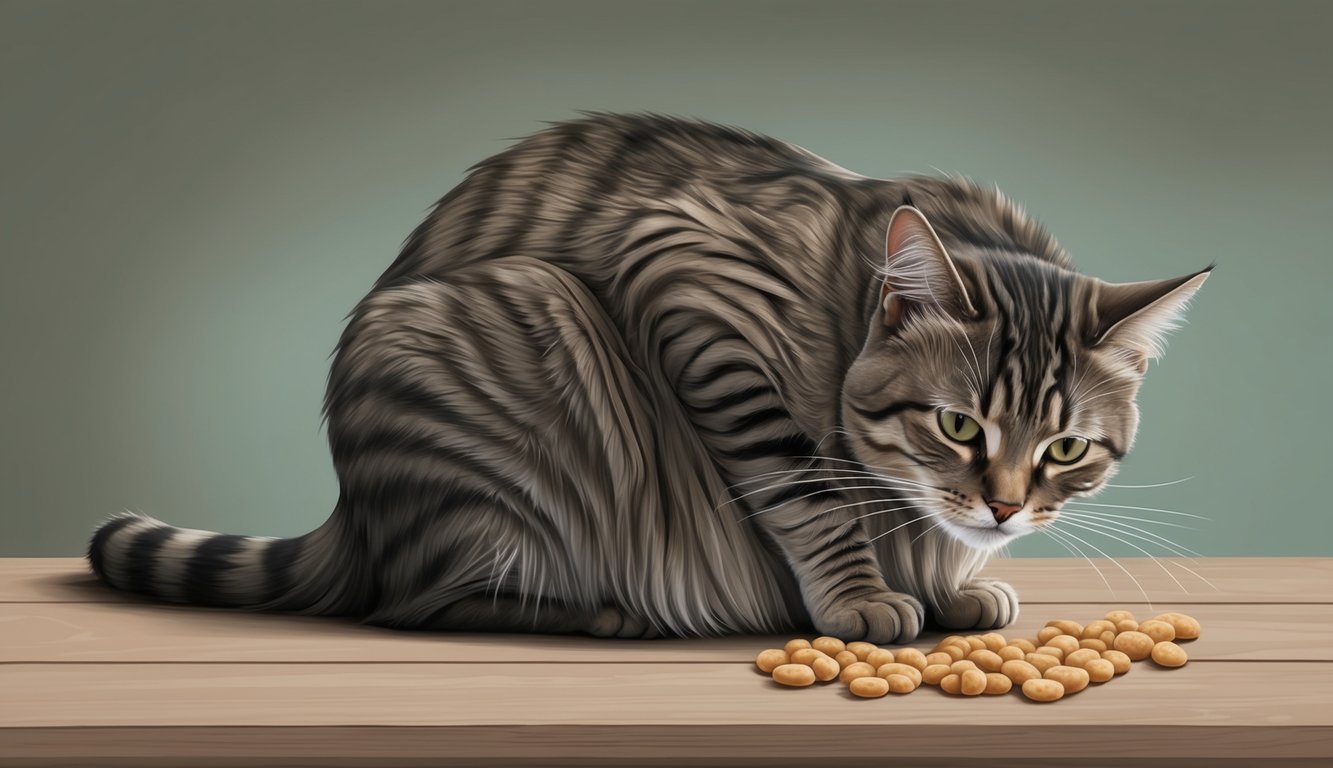
Giardia infection in cats often leads to a range of gastrointestinal and systemic symptoms that can indicate underlying health issues.
Understanding these symptoms is crucial for timely intervention and treatment.
Gastrointestinal Distress
The most common gastrointestinal symptoms associated with Giardia in cats include:
- Diarrhea: This often manifests as watery diarrhea, which may be foul-smelling and may contain mucus.
- Vomiting: Frequent vomiting can accompany diarrhea, further affecting your cat’s hydration and comfort.
- Flatulence: Increased gas production can result in noticeable bloating or discomfort for your cat.
- Abdominal Pain: Your cat may show signs of abdominal pain, such as sensitivity when touched or changes in posture.
The combination of these symptoms can lead to dehydration if not addressed promptly.
Be vigilant and seek veterinary advice if you observe these signs.
Systemic Effects
In addition to gastrointestinal issues, Giardia can cause several systemic effects in your cat:
- Lethargy: You might notice a decline in your cat’s energy levels, making it less active or playful than usual.
- Weight Loss: Prolonged diarrhea and decreased appetite may lead to unhealthy weight loss over time.
- Dehydration: As fluid loss increases, your cat may become lethargic and exhibit dry gums or skin.
Monitoring your cat’s behavior and health is essential.
If any of these systemic symptoms arise, consulting with your veterinarian will help ensure effective treatment.
Transmission and Risk Factors
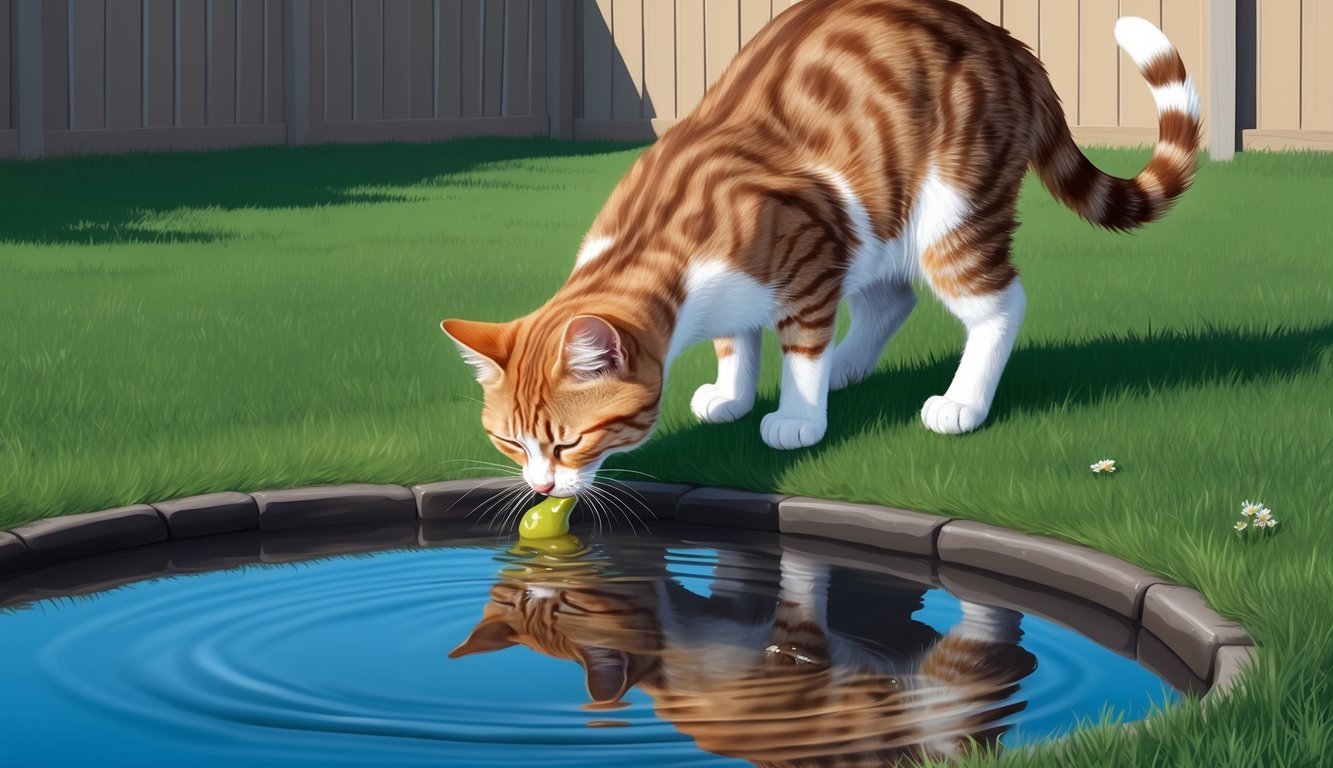
Understanding how Giardia spreads is essential in protecting your cat.
Its transmission often occurs through contaminated environments, food, or interactions with infected animals.
Sources of Infection
Giardia is primarily transmitted through contaminated water, which can happen if your cat drinks from puddles or shared water bowls. Fecal contamination is another significant source; when infected feces dry, they can release cysts into the environment.
You should also be cautious about contaminated soil and food, especially if your cat frequents outdoor areas where other animals roam.
Furthermore, places like animal shelters, catteries, or pet stores can pose risks, as many animals occupy small spaces and may carry the parasite without showing symptoms.
Factors Increasing Infection Risk
Several factors can increase the likelihood of Giardia infection in your cat.
Young cats are particularly at risk, as their immune systems are still developing.
If your cat is in a multi-pet household or frequently visits dog parks or other common areas, there’s a higher chance of exposure to infected animals.
In addition, poor sanitation in areas where pets live or play can lead to increased contamination.
Proper hygiene practices, such as cleaning litter boxes and providing fresh water, are vital in minimizing these risks.
Diagnosis of Giardia
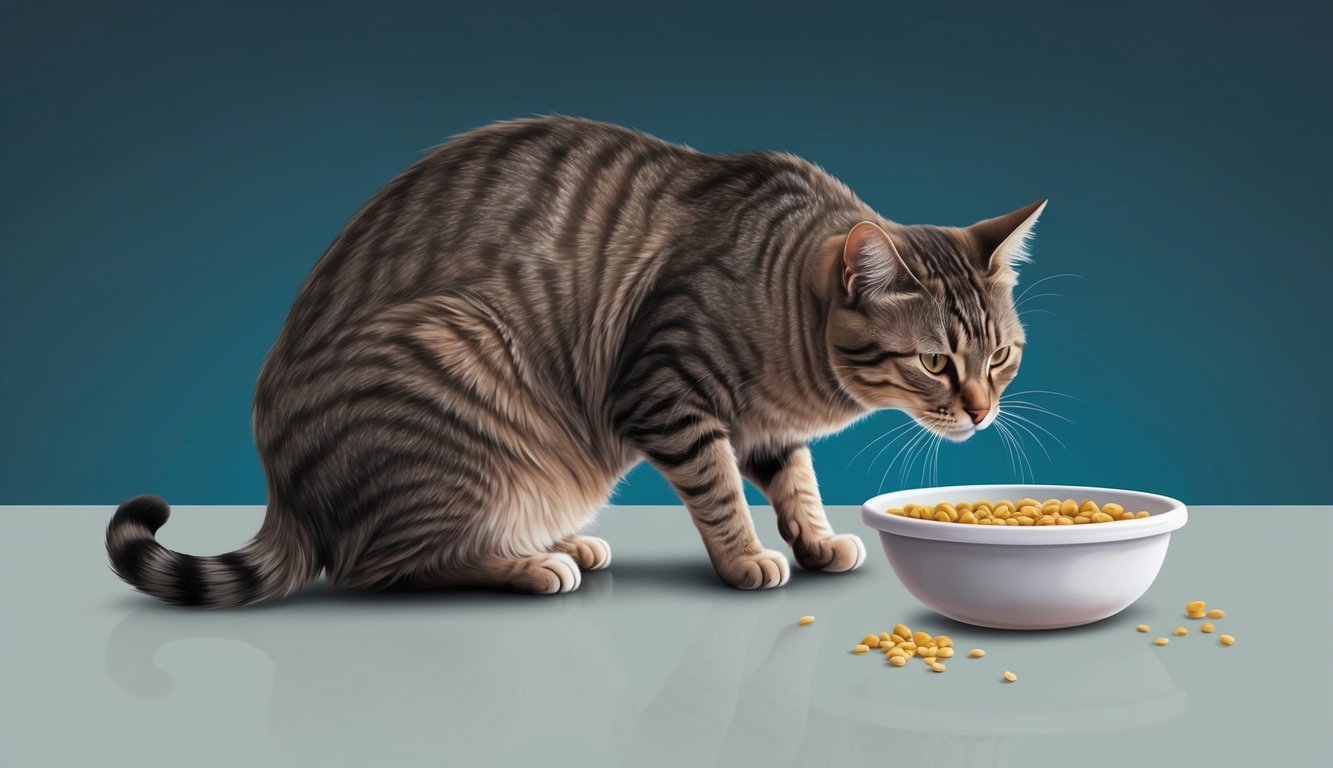
Diagnosing Giardia in cats requires a careful assessment involving both clinical observations and laboratory tests.
Recognizing the symptoms, such as diarrhea and weight loss, can guide a veterinarian towards the right diagnostic path.
Clinical Examination
During a clinical examination, your veterinarian will thoroughly assess your cat’s overall health.
They’ll look for common signs of Giardia infection, including diarrhea, which is often watery and may contain mucus.
Your cat might also show signs of increased grooming due to irritation around the perianal area.
This excessive grooming often causes further contamination with Giardia cysts.
Additionally, the vet will check for weight loss, lethargy, or changes in appetite, as these can indicate a significant health issue.
Laboratory Tests
Laboratory tests are crucial for confirming Giardia infections.
The most common method involves fecal samples to identify Giardia cysts.
These samples can be examined using a fecal flotation test, which helps separate the cysts from other debris in the stool.
Additionally, some veterinarians might utilize advanced techniques like enzyme-linked immunosorbent assay (ELISA) or polymerase chain reaction (PCR) testing to enhance detection accuracy.
These tests can sometimes identify the presence of Giardia even when cysts are not easily observable.
Combining clinical signs and lab results will lead to a more accurate diagnosis and help determine the best treatment plan for your cat.
Treatment and Management

When dealing with Giardia in cats, prompt treatment is essential.
Managing this condition involves medication, supportive care, and strict hygiene measures to prevent reinfection.
Here’s what you need to know.
Medications
For treating Giardia, your veterinarian may prescribe medications such as Metronidazole or Fenbendazole (commonly known as Panacur).
Both are effective in eliminating the parasite from your cat’s system.
- Metronidazole: This antibiotic has anti-parasitic properties and is often used for Giardia infections. The typical dosage may vary, so follow your vet’s instructions closely.
- Fenbendazole: This dewormer is another trusted option. Usually given for three consecutive days, it can help clear the infection effectively.
In addition to these medications, ensure you follow through with any supportive care recommended by your vet, particularly if your cat is dehydrated or has lost weight.
Caring for an Infected Cat
During treatment, your cat may require extra attention.
Ensure they have access to plenty of fresh water to prevent dehydration, especially if they have diarrhea.
- Dietary Changes: Consider offering a bland diet temporarily to help soothe their digestive system. Boiled chicken or a special prescription diet might be beneficial.
- Comfort: Create a quiet, comfortable space for your cat to rest. Stress can exacerbate their condition.
Regularly monitor your cat for any changes.
If symptoms worsen or new symptoms appear, contact your veterinarian immediately.
Preventing Reinfection
Preventing reinfection is crucial.
Giardia can be persistent, so maintaining hygiene is essential.
- Litter Box Hygiene: Scoop the litter box daily and disinfect it regularly to eliminate any cysts.
- Grooming: If your cat is a good groomer, check for signs of cyst contamination from their fur. Bathing might be necessary under vet advice.
- Personal Hygiene: Always wash your hands after handling your cat’s litter or food. This simple step can greatly reduce the risk of spreading the infection.
By focusing on these areas, you can help ensure your cat recovers fully and stays healthy.
Disinfection and Hygiene
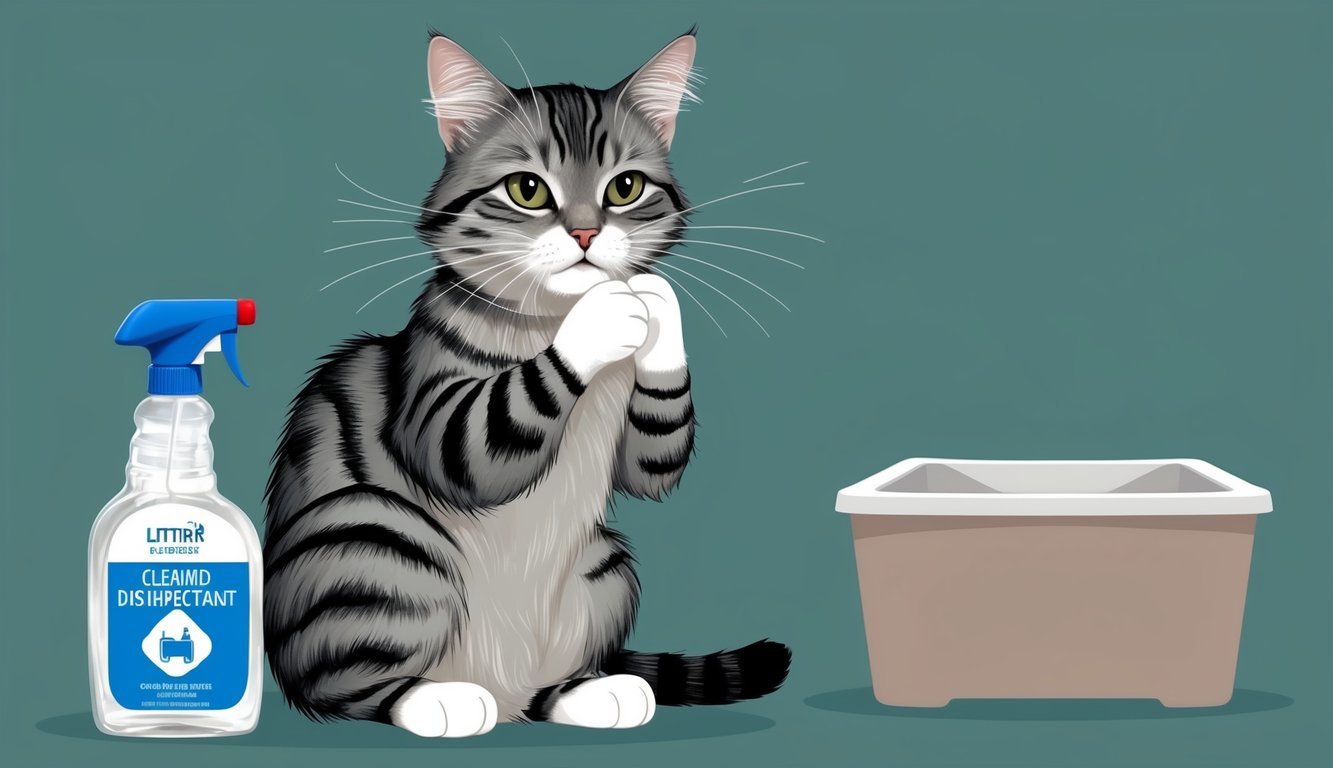
Maintaining a clean environment is crucial for preventing and managing Giardia infections in cats.
Effective disinfection and hygiene practices help reduce the risk of reinfection and protect your pet’s health.
Cleaning Protocols
Start by establishing a regular cleaning routine in areas where your cat spends time.
Wipe down surfaces, including countertops and furniture, with a suitable disinfectant.
Focus on high-traffic areas like feeding and sleeping spots.
Follow these steps for effective cleaning:
- Remove Debris: Clear away any dirt or waste.
- Wash Bedding: Use hot water and safe detergents.
- Litter Boxes: Empty and wash boxes with a disinfectant after each use.
- Steam Cleaning: Use a steam cleaner on carpets and upholstery to kill pathogens.
By incorporating these cleaning protocols, you can significantly minimize Giardia’s environmental presence.
Effective Disinfectants
Choosing the right disinfectants is essential for eliminating Giardia.
Here are some options:
- Chlorine Bleach: A bleach solution (1:10 dilution) can effectively kill Giardia cysts on hard surfaces. Always rinse thoroughly with water afterward.
- Quaternary Ammonium Compounds: These are safe for use around pets and can disinfect various surfaces. Follow the manufacturer’s instructions for proper use.
- Ammonia: While effective, do not mix ammonia with bleach, as it creates toxic gases.
Using effective disinfectants along with solid cleaning protocols will help keep your cat’s environment safe and healthy.
Understanding Asymptomatic Carriers
Asymptomatic carriers can pose challenges in recognizing and managing giardiasis in cats.
While these cats may not show signs of illness, they can still contribute to the spread of the disease.
Understanding the nuances of asymptomatic cases and their potential impact on transmission is crucial for effective management.
Identifying Asymptomatic Cases
Asymptomatic cats may not display any noticeable signs of giardiasis, making identification tricky.
To uncover potential infections, you need to conduct regular fecal examinations.
- Common indicators of asymptomatic carriers:
- No visible diarrhea or weight loss
- Normal behavior and energy levels
- Presence of Giardia cysts in feces during tests
Testing multiple cats is also necessary to truly identify asymptomatic cases.
This approach helps in revealing hidden infections that could be spreading within your home.
Impact on Transmission
Asymptomatic carriers can be surprisingly contagious.
They can shed Giardia cysts in their feces, contaminating surfaces and environments.
This can lead to infection in other pets or even humans.
- Key transmission factors:
- Cysts can survive in soil and on surfaces for extended periods.
- Cats may ingest cysts during grooming or from contaminated food and water.
Understanding this aspect is vital.
It will help you realize the importance of maintaining cleanliness and monitoring your cat’s health.
Other Health Considerations
When dealing with giardia in cats, it’s important to be aware of other potential health issues.
Concurrent infections can complicate treatment and require a more comprehensive approach.
Concurrent Infections
Cats with giardiasis may be particularly vulnerable to other infections, especially if their immune systems are compromised.
Feline Immunodeficiency Virus (FIV) and Feline Leukemia Virus (FeLV) can significantly impact your cat’s health.
These viruses make it harder for your cat to fight off parasites and infections, leading to more severe symptoms.
Infected cats may display:
- Chronic diarrhea
- Weight loss
- Lethargy
If your cat shows signs of infection, a veterinary examination is crucial.
Testing for FIV and FeLV can provide valuable insights into your cat’s overall health and help tailor treatment plans effectively.
Keeping vaccinations up-to-date also plays a critical role in prevention.
Frequently Asked Questions
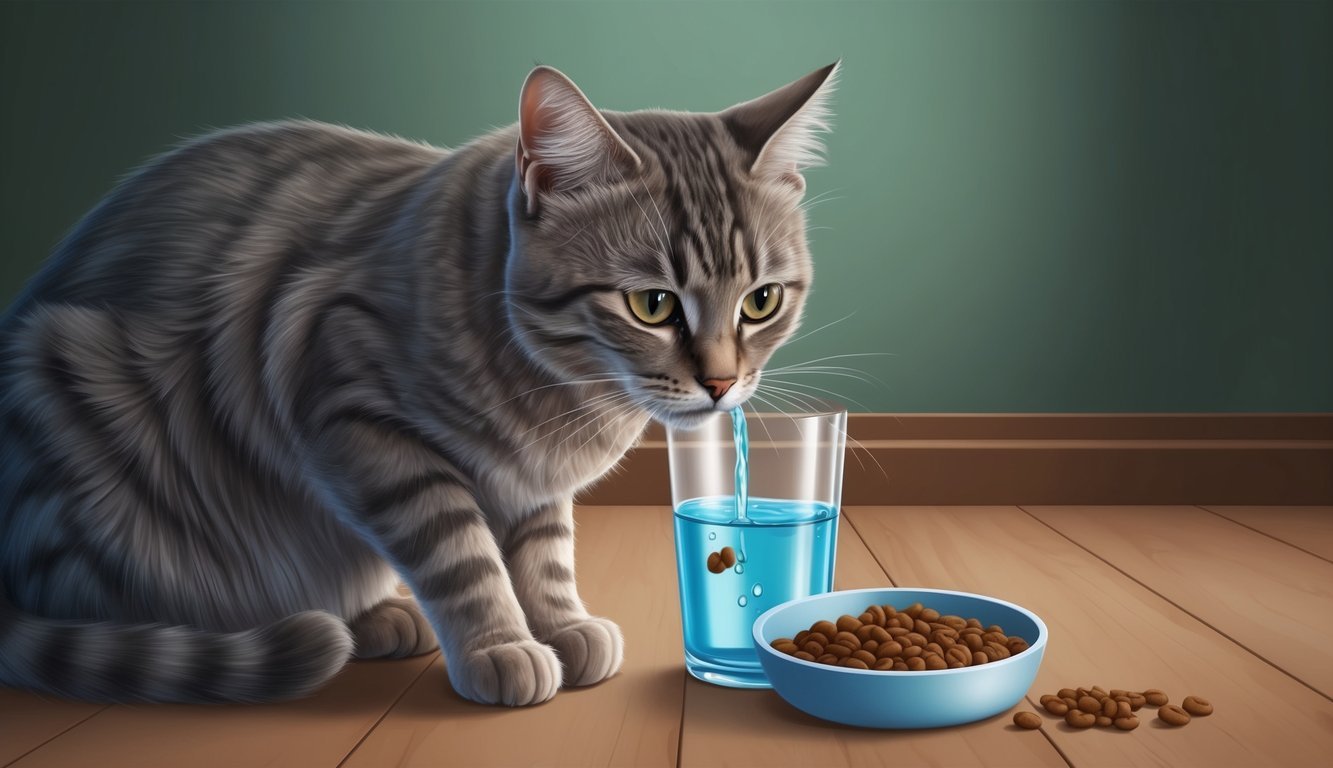
Giardia can cause a variety of symptoms in cats, and understanding these can help you identify an infection early.
You might also wonder about the risks of transmission to humans, treatment options, and the importance of addressing this condition promptly.
What are the signs that a cat may be infected with Giardia?
Cats infected with Giardia often show symptoms like diarrhea, gas, vomiting, and poor appetite.
You may also notice weight loss or lethargy.
Excessive grooming, especially around the perineum, might occur as your cat tries to deal with discomfort.
Can humans catch Giardia from their feline companions?
Yes, humans can contract Giardia from infected cats.
The transmission typically occurs through contaminated environments or surfaces, especially if you come into contact with infected feces.
Maintaining good hygiene, such as handwashing after handling your cat, helps minimize this risk.
What treatments are available for a cat diagnosed with Giardia?
Treatment often includes medications such as metronidazole or fenbendazole, which are effective in eliminating the parasite.
Your veterinarian may also recommend supportive care, like hydration and dietary adjustments.
Following their guidance is crucial for your cat’s recovery.
What is the duration of treatment for a cat with Giardia until they are fully cured?
The treatment duration usually spans 5 to 7 days, depending on the severity of the infection and your vet’s recommendations.
It’s important to follow through with the entire course of medication to ensure the parasite is completely eradicated.
What are the consequences of not treating Giardia in cats?
If left untreated, Giardia can lead to persistent diarrhea, weight loss, and other serious health issues.
In severe cases, chronic gastrointestinal problems may develop, impacting your cat’s overall health and quality of life.
Is Giardia a common infection among the feline population?
Giardia infections are relatively common in cats, particularly in younger or immunocompromised animals.
It’s often found in environments with poor sanitation or among groups of animals.
This makes awareness and preventive measures important for cat owners.


